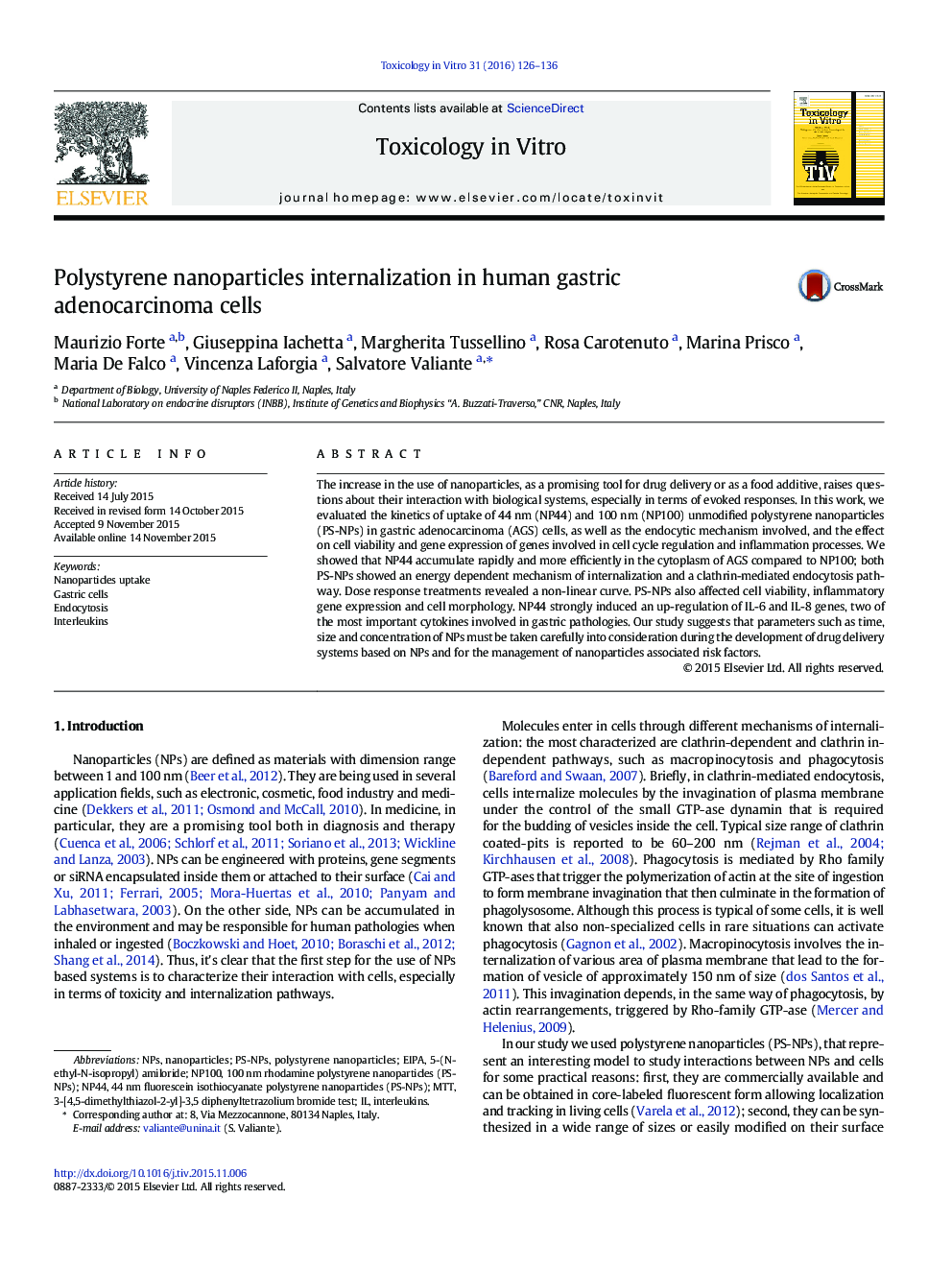| Article ID | Journal | Published Year | Pages | File Type |
|---|---|---|---|---|
| 5861194 | Toxicology in Vitro | 2016 | 11 Pages |
Abstract
The increase in the use of nanoparticles, as a promising tool for drug delivery or as a food additive, raises questions about their interaction with biological systems, especially in terms of evoked responses. In this work, we evaluated the kinetics of uptake of 44Â nm (NP44) and 100Â nm (NP100) unmodified polystyrene nanoparticles (PS-NPs) in gastric adenocarcinoma (AGS) cells, as well as the endocytic mechanism involved, and the effect on cell viability and gene expression of genes involved in cell cycle regulation and inflammation processes. We showed that NP44 accumulate rapidly and more efficiently in the cytoplasm of AGS compared to NP100; both PS-NPs showed an energy dependent mechanism of internalization and a clathrin-mediated endocytosis pathway. Dose response treatments revealed a non-linear curve. PS-NPs also affected cell viability, inflammatory gene expression and cell morphology. NP44 strongly induced an up-regulation of IL-6 and IL-8 genes, two of the most important cytokines involved in gastric pathologies. Our study suggests that parameters such as time, size and concentration of NPs must be taken carefully into consideration during the development of drug delivery systems based on NPs and for the management of nanoparticles associated risk factors.
Related Topics
Life Sciences
Environmental Science
Health, Toxicology and Mutagenesis
Authors
Maurizio Forte, Giuseppina Iachetta, Margherita Tussellino, Rosa Carotenuto, Marina Prisco, Maria De Falco, Vincenza Laforgia, Salvatore Valiante,
